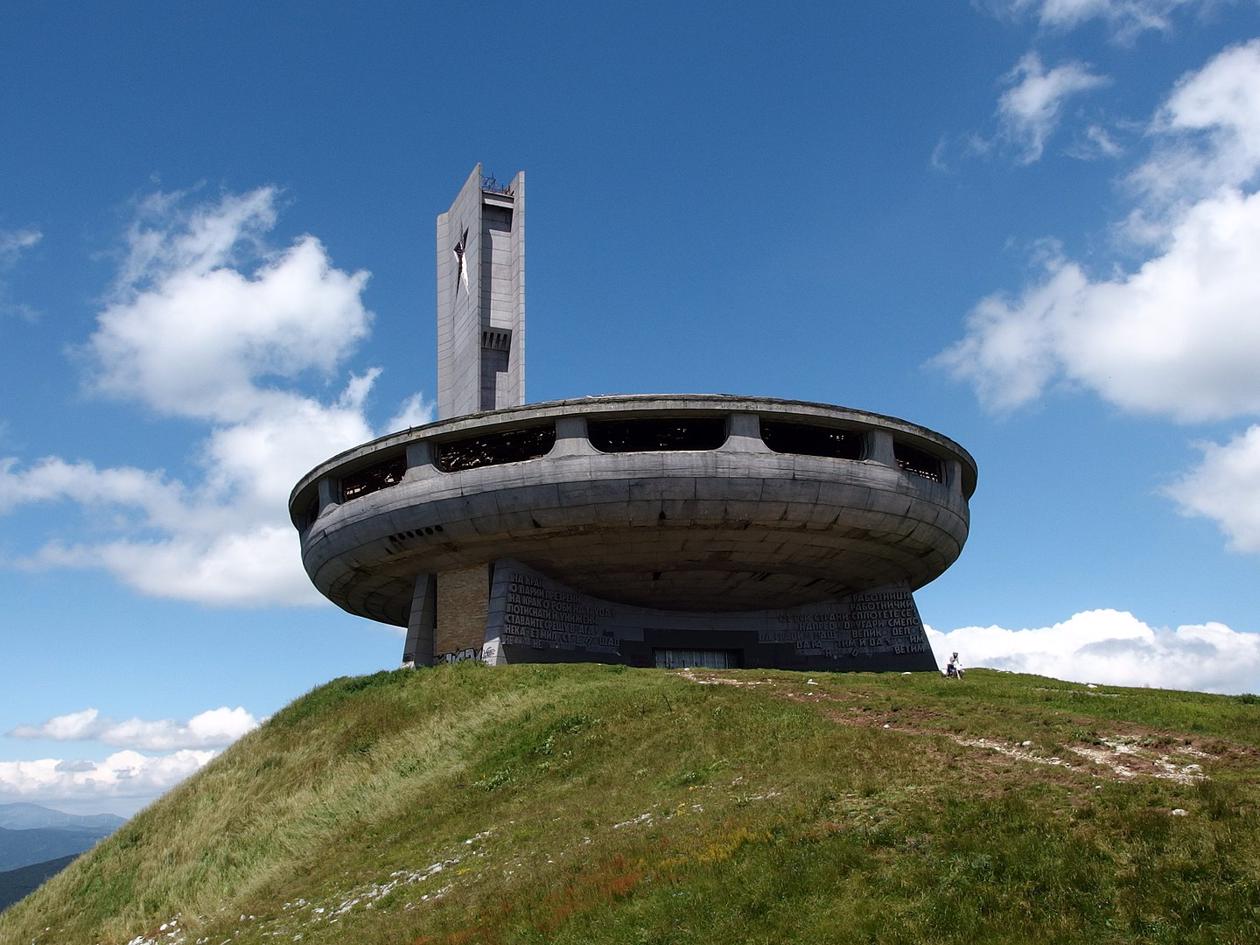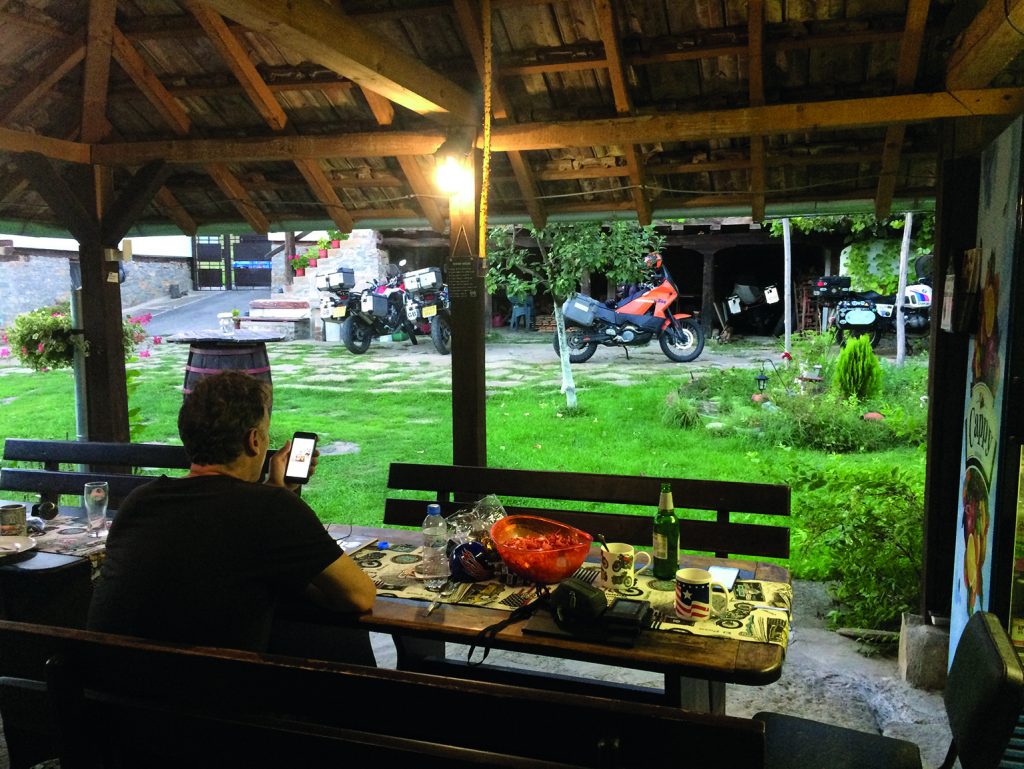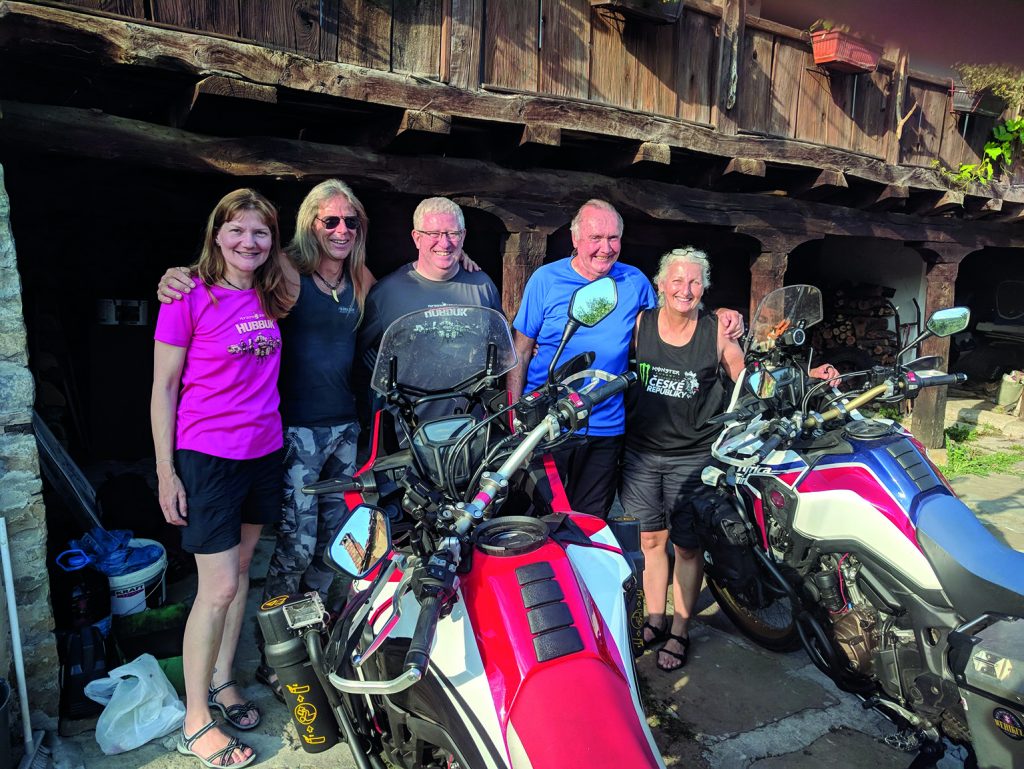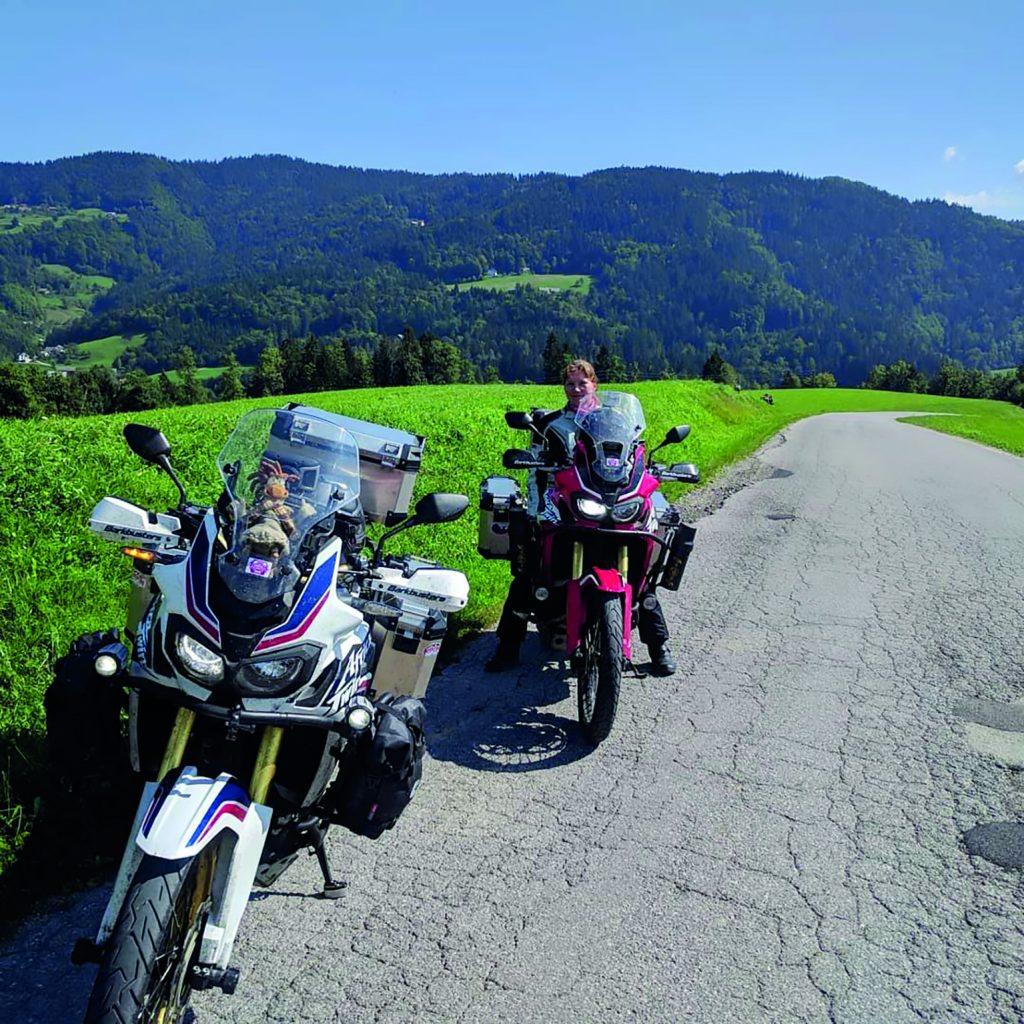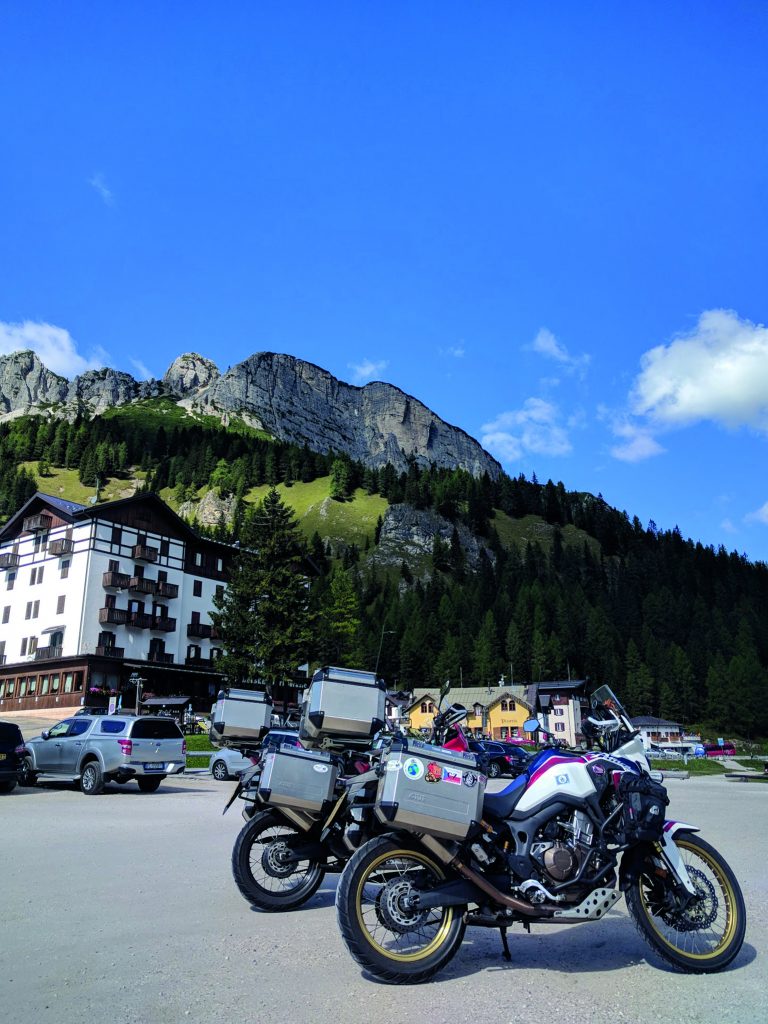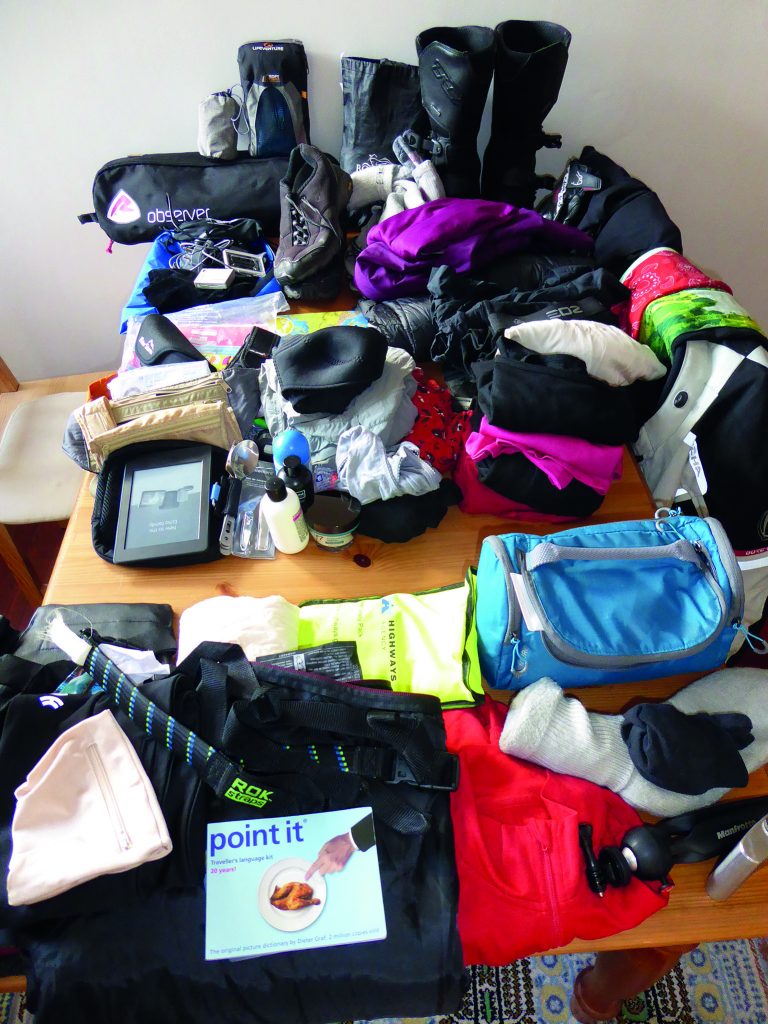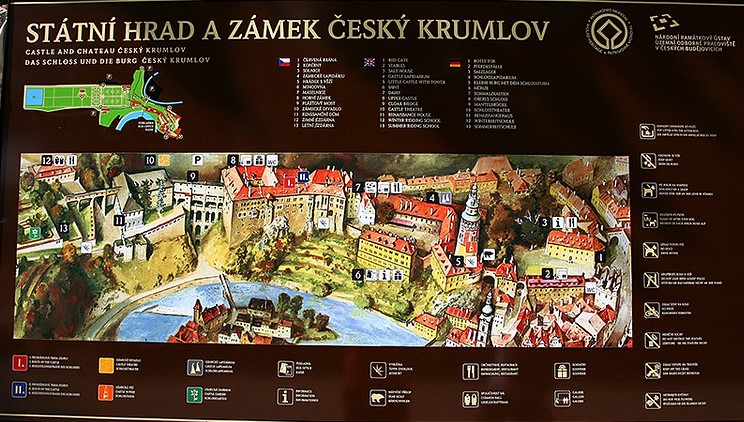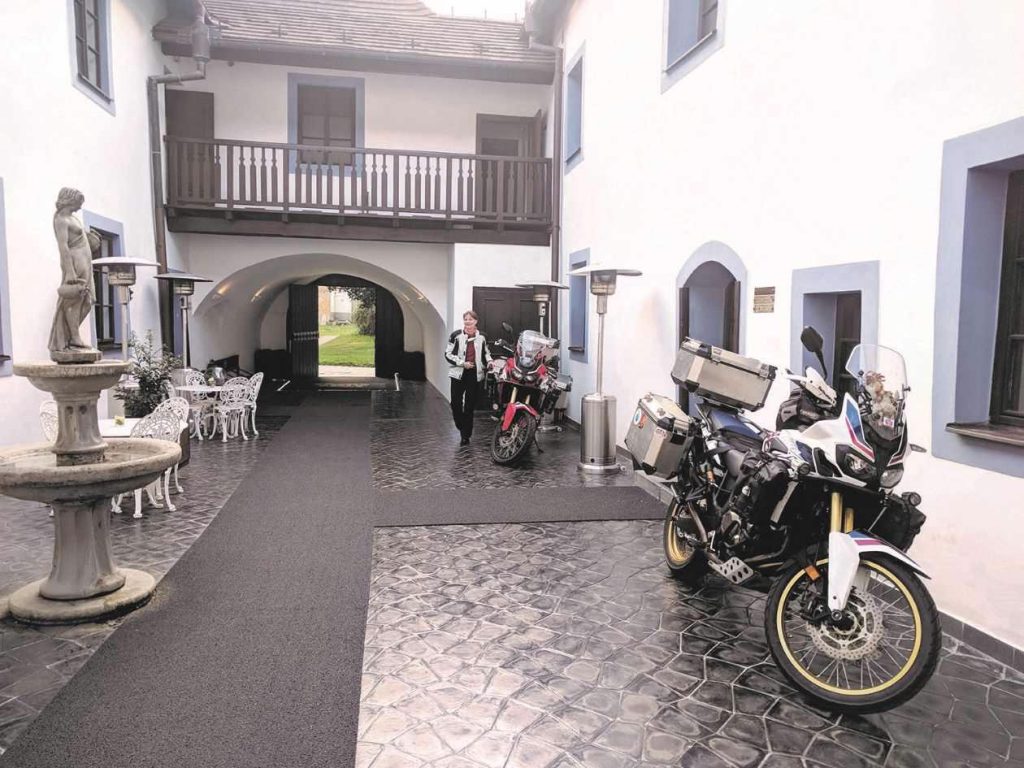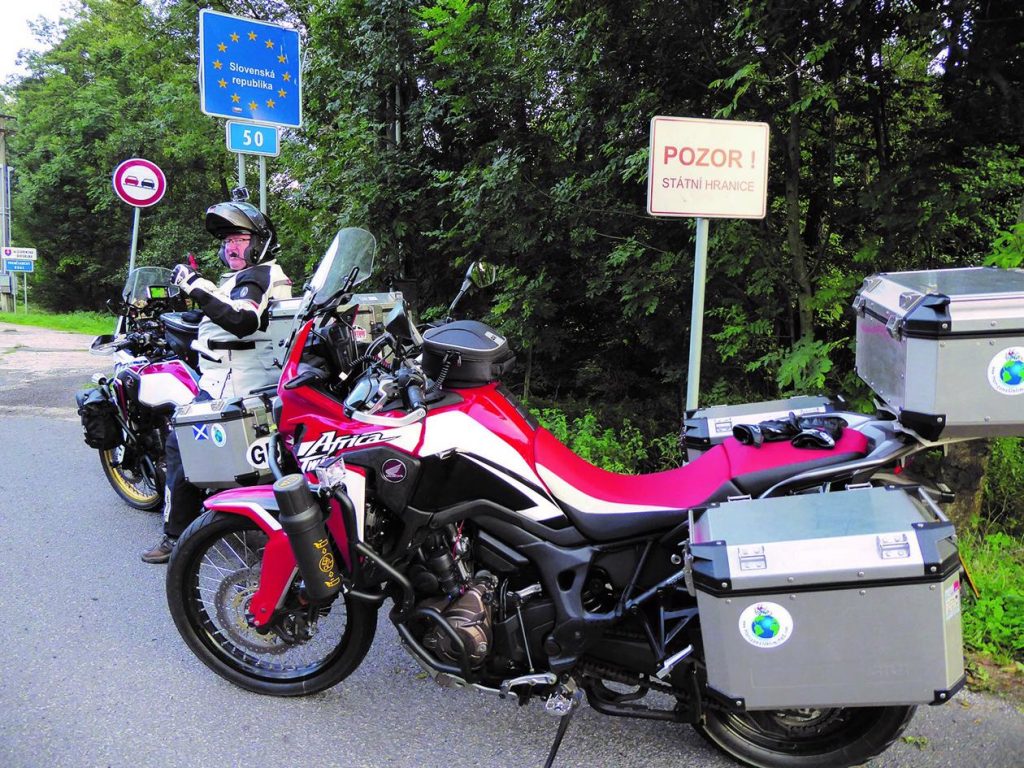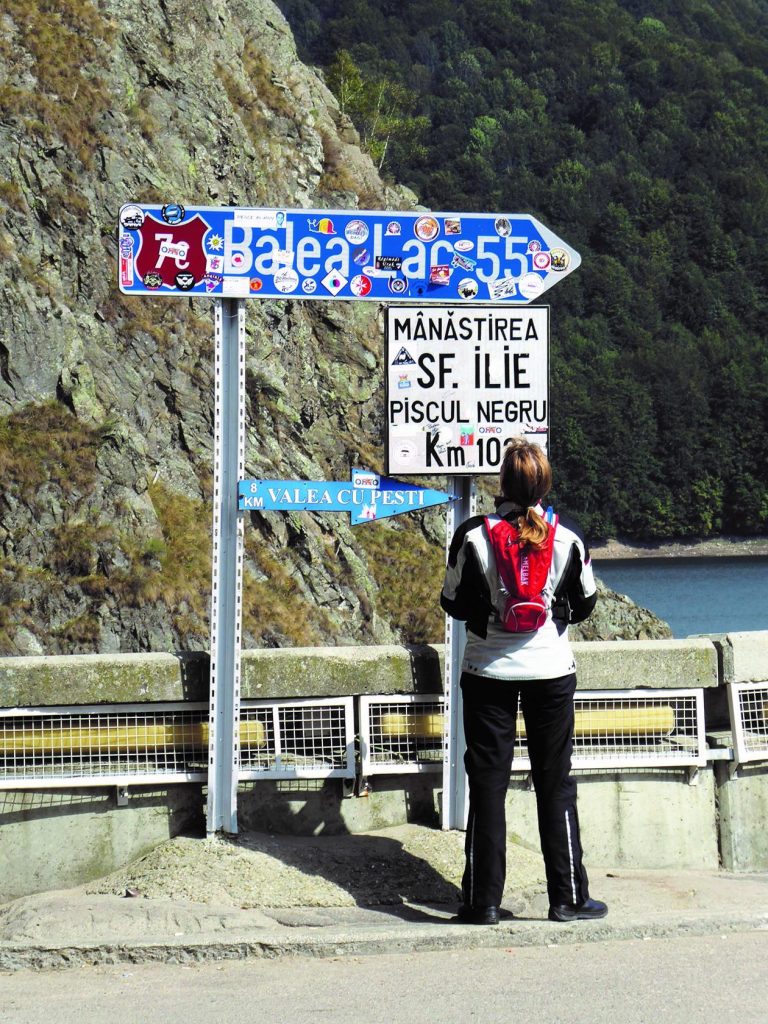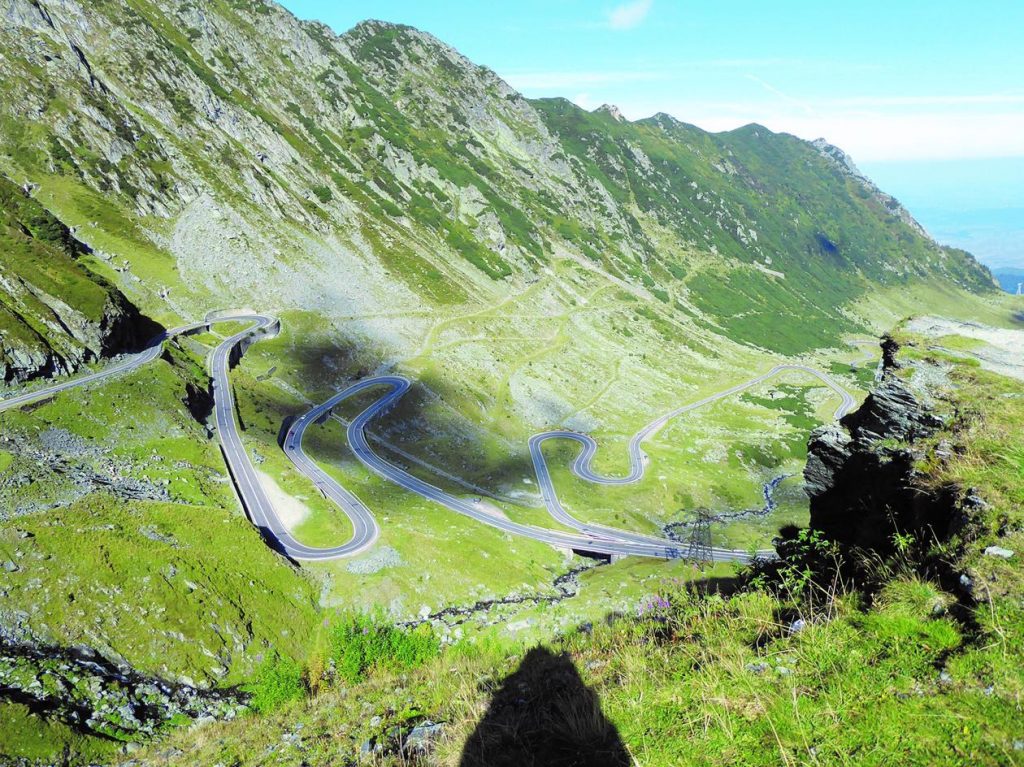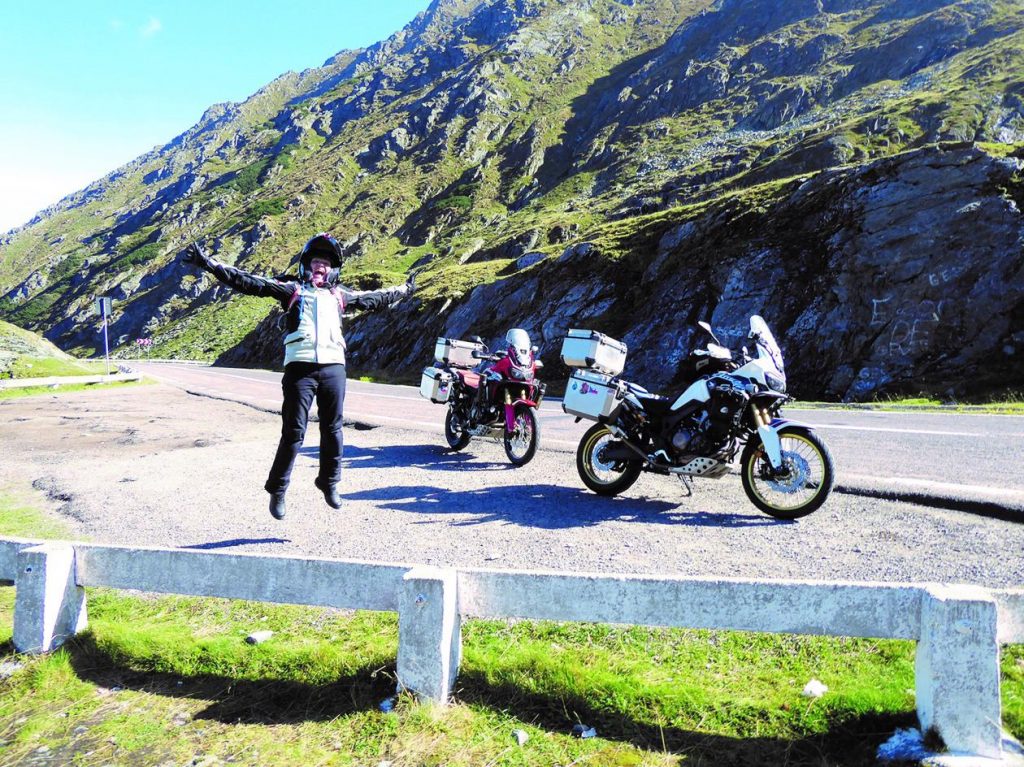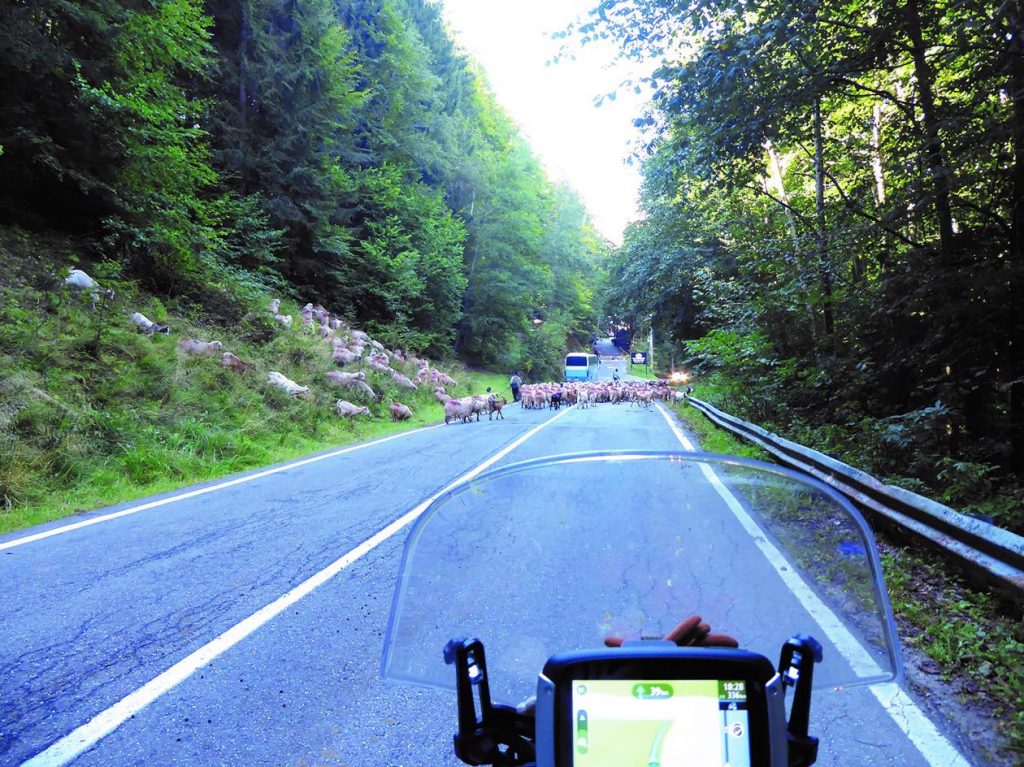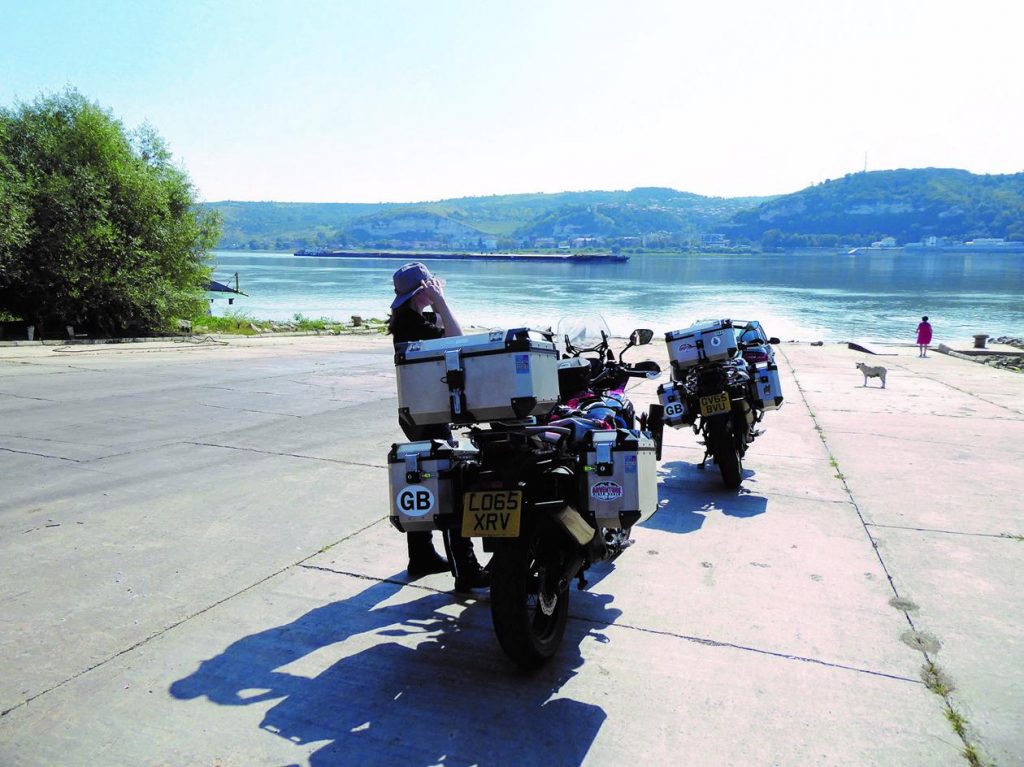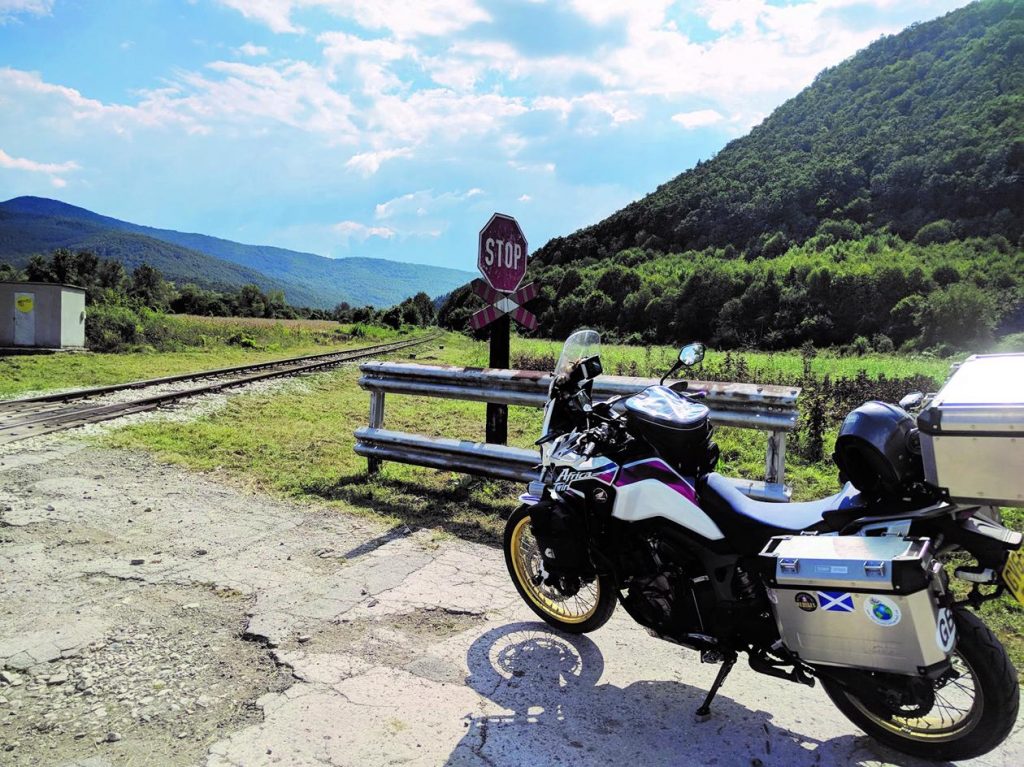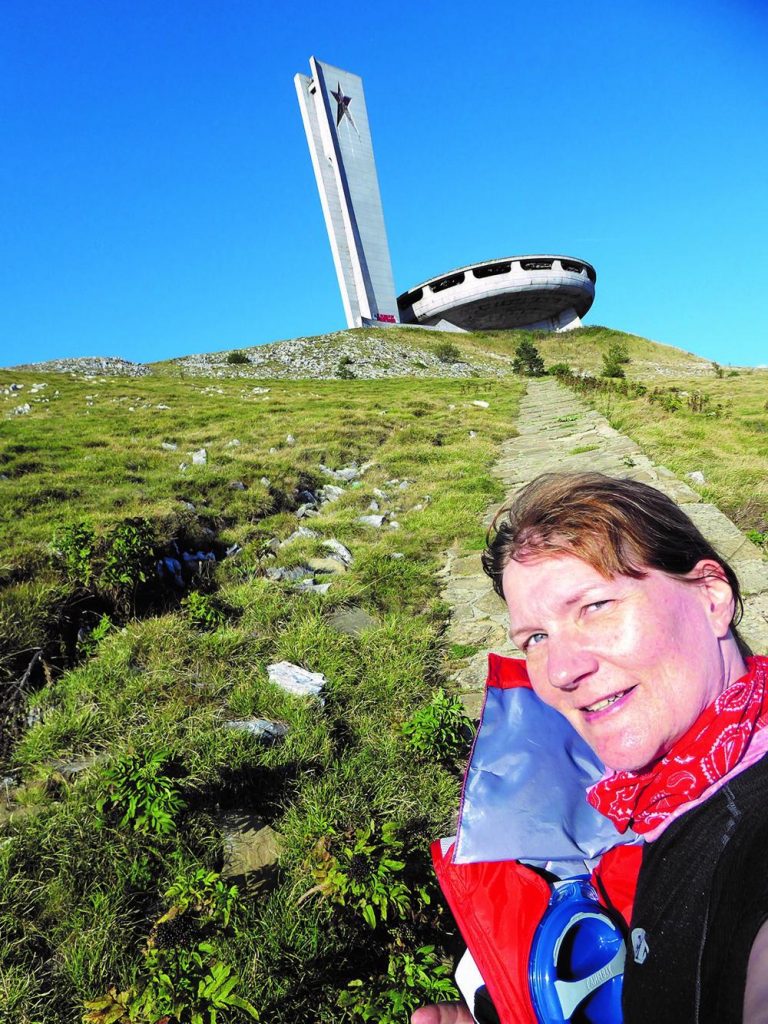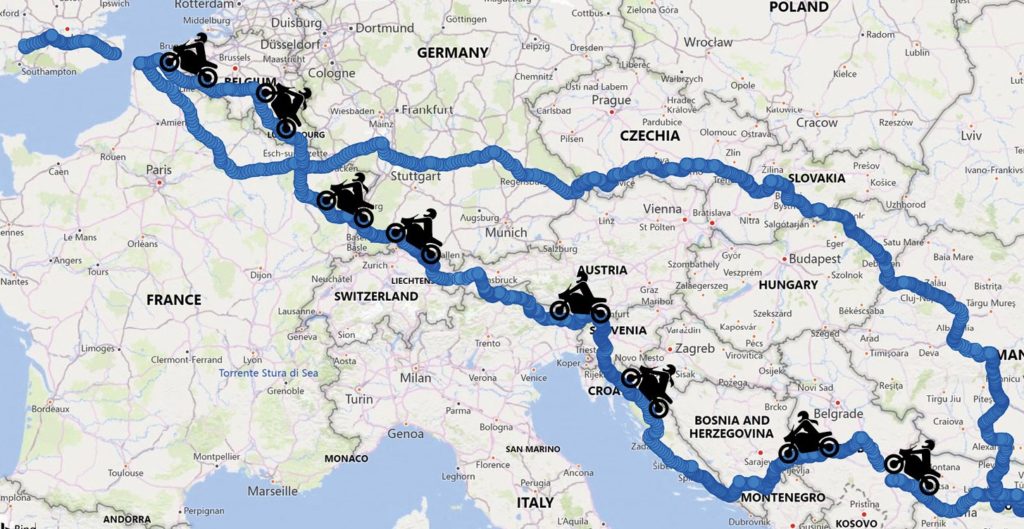
What could go wrong indeed… Dave had spotted us riding through Idilevo, straight past the entrance to MotoCamp and turn up the farmers track. He expected to see us reappear moments later but after a couple of minutes decided to jump on his scrambler and check we were ok. Apparently no-one had ever ridden so far up the side of the hill as I did that evening and Ivo laughed when Dave told him where he’d found me.
As we unpacked the bikes Ivo asked if we’d eaten and we said no. There was nowhere nearby for food but they had ordered pizza which had just arrived and they gave us one of the boxes, we were very hungry and very grateful. MotoCamp has an outdoor kitchen for anyone to use and an honesty system where you can take beers or ice creams and note it in the book, settle up when you leave. Our bar tab rose steadily over the evening with no plans to ride anywhere the following day.
Over the course of the evening we met several other travellers, notably Ken and Carol Duval who have spent over twenty years riding around the world. I messaged Graham Field who inspired our visit and lived in the village, he popped down to meet us the following day. Although we only spent a couple of nights there it was extraordinary and we keep in touch with the people we met, even hosting Ken and Carol in the UK as they passed through on their now COVID curtailed journey.
Ken and Carol had recommended visiting the town of Nis in Serbia so we finally turned westwards and said our goodbyes to Ivo and the friends we’d met at Motocamp. They all came out to wave us on our way.
The ride to Nis was around 250 miles which is a good distance to cover for one day, enough time to stop and look around without making it into a long day. Serbia is not in the EU so we had to go through a border. There was a long queue when we arrived with the border guards making it clear there would be no filtering to the front. It was slow progress but a quick passport check and we were through. It’s worth noting that some UK insurance will include cover for Serbia and some won’t but the border officials didn’t check.
The apartment we’d booked in Nis was in the town centre, next to the river and fort. As we pulled up on a side street a man came jogging over to invite us to the bar in the square behind. He must have seen the surprise on our faces at being addressed in English as he quickly told us he’d seen our GB stickers, his wife was English and he was the owner of the bar.
Dejan directed us to park on the pavement alongside a row of Vespa scooters, in front of the aptly named Vespa bar. Dejan introduced us to his friends and had drinks and snacks brought out to us. We talked about the trip and he told us about some of his adventures, the biggest being a 7500km ride he and two other members of the Vespa Club Naissus had done through Greece, Italy, France and to York in the UK to visit imperial cities. It just goes to show that the bike you love is the bike for your adventure.
After chatting for a while Dejan insisted on calling our apartment owner to come and show us the way. When we went to leave he wouldn’t accept anything for the drinks and snacks, hopefully we can return the hospitality one day as we remain in contact through Facebook.
The apartment owners’ son had turned up and opened a garage for us to lock the bikes away. The apartment was on the fifth floor with no lift so he helped us carry our gear up, recommending that we visit the fort as it was still open for a couple of hours.
The weather had remained warm and sunny throughout the trip and the temperatures were now in the low 30’s. In truth, the Richa jackets and trousers we wore were just a bit too warm. By opening all the vents and wearing merino wool leggings and tops underneath to wick the sweat away, kept us at least comfortable.
The ride today from Nis to Gradac in Croatia would be a long one, over 350 miles, crossing into Bosnia and Herzegovina and out again. The border control was a much smaller setup but here they checked everything. Our bike insurance’s didn’t cover Bosnia and Herzegovina so we were directed to an insurance hut to buy temporary insurance while the border guard held our passports. Twenty euro’s each for third party insurance that would last 28 days. We needed just six hours!
The ride today from Nis to Gradac in Croatia would be a long one, over 350 miles, crossing into Bosnia and Herzegovina and out again. The border control was a much smaller setup but here they checked everything. Our bike insurance’s didn’t cover Bosnia and Herzegovina so we were directed to an insurance hut to buy temporary insurance while the border guard held our passports. Twenty euro’s each for third party insurance that would last 28 days. We needed just six hours!
The road we took through Bosnia hugged the side of a valley with a river running through it. The road surface was well maintained with pretty but not spectacular views which made for an enjoyable few hours of riding, interrupted only once by a car overtaking another around a blind bend forcing me to the side of the road. I’m surprised I didn’t get his wing mirror with my panniers he was that close. I must have been fairly relaxed as Marije only heard a calm “flippin eejit” over the intercom. We passed through Mostar with its famous bridge but didn’t stop, another one to revisit.
We stopped at a viewpoint near the coast in Croatia but rather than find accommodation online Marije was determined to find us somewhere by word of mouth. It was late in the day as we parked up in Gradac, the nearest town. I stayed with the bikes as Marije walked around but after a few minutes she was back. The very first person she had spoken to, a German lady stood on a balcony having a smoke also rented out rooms in an apartment. She showed us the room and shared kitchen and we checked in, she even moved her car from the drive so we could park the bikes then blocked them in for the night.
A moonlit walk on the beach, cold beers and dinner by the ocean made for a pleasant end to the day. Marije had been filming the trip and as we sat in the restaurant, the sea lapping the sand just a few feet away, she pointed the camera at me and asked where we were. Croatia, exactly where I don’t know but it’s great, and that’s really all I need to know.
The sun continued to shine as we headed north towards Slovenia, the coast roads of Croatia having spectacular views over the Adriatic. Our intention was to stop at Lake Bled in Slovenia but to make it interesting we put a route into the sat nav that would take in some of the small passes over the mountains on the way. Depending on your head for heights this was either genius or foolhardy. The roads are all single track with no barriers and steep drops if you come off but the scenery is spectacular. The houses and chalets are picture postcard, the livestock with cattle bells and it appeared that all the grass had been mown that day.
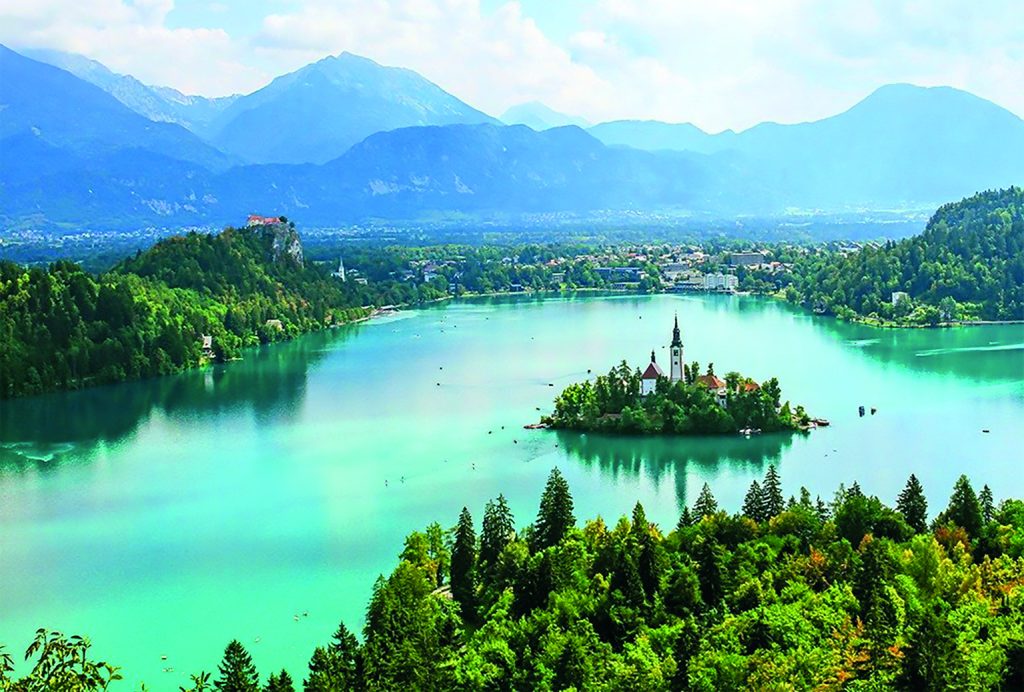
Lake Bled is a popular destination with its fairy-tale castle surrounded by water. It’s also surrounded by tourists so it’s busy even in September. We rode around it until we saw a large restaurant with outside seating and several bikes parked up. As we stopped a small group came over, they had flown into Europe from Malaysia and hired BMW bikes to tour around on despite owning Africa Twins at home. One of them described how although he loved the Africa Twin it was quite tall for him. Mine’s lowered and he tried it out, I think he planned to order the parts to lower his that evening!
Later that day we rode into Italy, the twelfth country on our trip, pausing for lunch in the Dolomites and headed for the Timmelsjoch high mountain pass, climbing 2509m on superb roads with the surrounding mountains as a backdrop. I’d highly recommend riding the pass but get to the top early so you can take advantage of a visit to the motorcycle museum. As it was late in the day we didn’t, but we still had to pay the €15 fee per bike that is used to maintain the road and gives access to the museum. Another reason for us to return!
Our route took us back through Western Europe where we passed through Austria and Switzerland where daily costs were five times the amount we’d spent in the eastern countries. Even using the roads had costs, with Slovenia and Austria needing vignettes, around €8 for a week even though we used them for only one day. The Swiss motorway vignette would have been around €36 per bike and if caught without one a fine of around €185 each, so we avoided the motorways, just cutting into Switzerland to get into Germany and onwards to France.
The last day of the trip started in drizzle as we left a small French town and headed towards Belgium where the heavens opened. Torrential rain followed us all day and we saw several cars that had hit standing water and spun off the road in the ditches being helped by recovery services. Our Richa gear was outstanding and kept us largely dry, letting in a bit of water around the neck and our gloves once soaking letting some water in up the wrists. At the service station for lunch we followed the trail of water to find a big group of bikers in leathers wringing out gloves and pouring out boots.
Our booked departure at the Eurotunnel was 5pm but we arrived by 3.30pm. Being cold and wet we just wanted to board the train and head back to Blighty, we asked to board an earlier train but were told no, too busy. I put the card with the letter G printed on it in my tank back and we headed towards the terminal. At the roundabout the guy in full waterproofs asked for the card and I just pointed at my tank bag, he asked “E?”, “No, G”, so he pointed us towards to terminal building. As we rode on I looked up at the board, F – delayed, G – Delayed, H – Delayed and so on. I rode around the car park and back towards the train only to be stopped by another employee – “E” I said loudly and he waved us on, at the next booth I could see the lanes to board the train, dozens of bikes lined up. “E” I said again and asked if I should join that lane and the barrier went up. Homeward bound.
In retrospect
Looking back we think that the people we met really made the trip. We still keep in touch with some of them and look forward to seeing them again once we can all get back to touring.
The trip proved the bikes, I didn’t have to touch the toolkit once even though I carried spares such as inner tubes, tyre irons, brake pads and oil as well as tools that would allow me to service the bike, all being used in the garage at home before the trip.
The costs once out of Western Europe are incredibly low, around a quarter and we weren’t going cheap either. We went too fast – fifteen countries in fifteen days – we could easily have spent two months doing this trip rather than two weeks! The internet makes travelling much easier but we really did miss it in Serbia and Bosnia where mobile data, although available, would be hugely expensive as they aren’t in the EU, so we turned off our phones.
We packed too much! Even on our next trip to Morocco in 2019 we took too much, so we’re still fine tuning our packing.
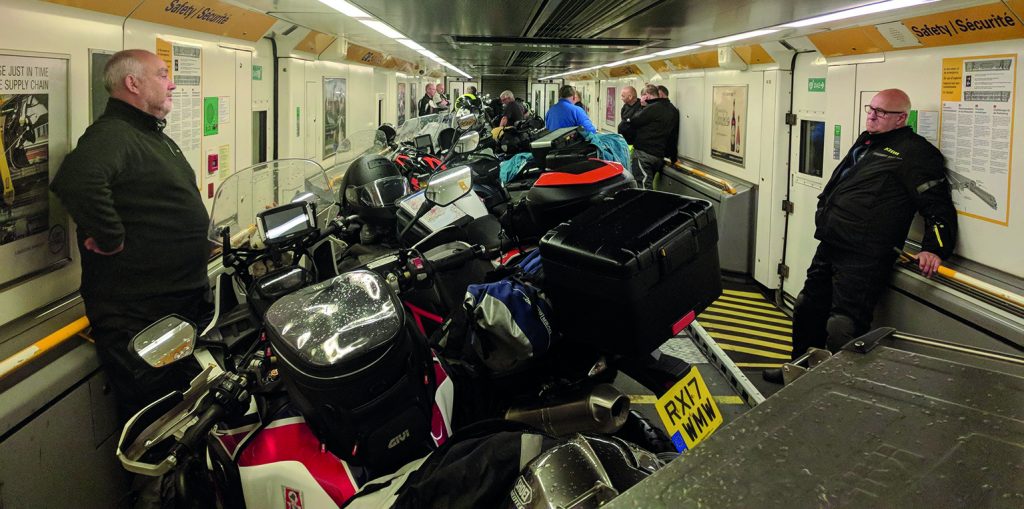
Damien Murray & Marije Schillern
First published in Slipstream February 2021
Featured Image (top) by Mark Ahsmann, CC BY-SA 4.0, via Wikimedia Commons. All other images by Damien Murray & Marije Schillern

